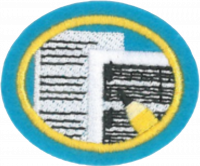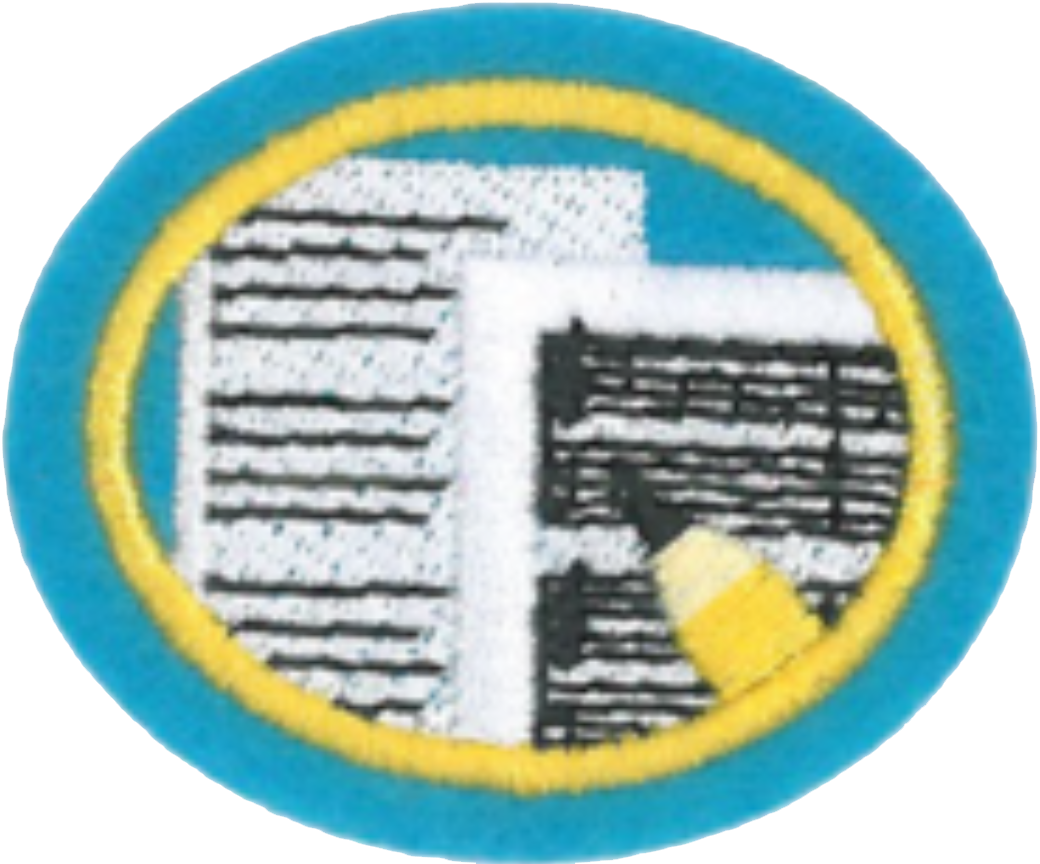Difference between revisions of "AY Honors/Poetry and Songwriting/Answer Key/es"
(Created page with "</noinclude>") |
(Created page with "</noinclude> <!-- 4. Investigar un tipo de poesía y escribir una breve historia al respecto, incluyendo los nombres de autores y poemas influyentes. -->") |
||
| Line 88: | Line 88: | ||
{{CloseReq}} <!-- 1 --> | {{CloseReq}} <!-- 1 --> | ||
{{ansreq|page={{#titleparts:{{PAGENAME}}|2|1}}|num=2}} | {{ansreq|page={{#titleparts:{{PAGENAME}}|2|1}}|num=2}} | ||
| − | <noinclude> | + | <noinclude></noinclude> |
| − | </noinclude> | + | <!-- 2. Los poemas se pueden dividir en cientos de tipos. Hacer una lista de cinco tipos diferentes y un poema en cada grupo. --> |
| − | <!-- 2. | ||
| − | |||
| − | |||
<div lang="en" dir="ltr" class="mw-content-ltr"> | <div lang="en" dir="ltr" class="mw-content-ltr"> | ||
| Line 107: | Line 104: | ||
</div> | </div> | ||
| − | + | <noinclude></noinclude> | |
| − | <noinclude | ||
| − | |||
{{CloseReq}} <!-- 2 --> | {{CloseReq}} <!-- 2 --> | ||
{{ansreq|page={{#titleparts:{{PAGENAME}}|2|1}}|num=3}} | {{ansreq|page={{#titleparts:{{PAGENAME}}|2|1}}|num=3}} | ||
| − | <noinclude> | + | <noinclude></noinclude> |
| − | </noinclude> | + | <!-- 3. ¿Cuál es la diferencia entre asonancia y consonancia? Dar un ejemplo de cada uno. --> |
| − | <!-- 3. | ||
| − | |||
| − | |||
| − | + | <noinclude></noinclude> | |
| − | <noinclude | ||
| − | |||
{{CloseReq}} <!-- 3 --> | {{CloseReq}} <!-- 3 --> | ||
{{ansreq|page={{#titleparts:{{PAGENAME}}|2|1}}|num=4}} | {{ansreq|page={{#titleparts:{{PAGENAME}}|2|1}}|num=4}} | ||
| − | <noinclude> | + | <noinclude></noinclude> |
| − | </noinclude> | + | <!-- 4. Investigar un tipo de poesía y escribir una breve historia al respecto, incluyendo los nombres de autores y poemas influyentes. --> |
| − | <!-- 4. | ||
| − | |||
| − | |||
| − | + | <noinclude></noinclude> | |
| − | <noinclude | ||
| − | |||
{{CloseReq}} <!-- 4 --> | {{CloseReq}} <!-- 4 --> | ||
{{ansreq|page={{#titleparts:{{PAGENAME}}|2|1}}|num=5}} | {{ansreq|page={{#titleparts:{{PAGENAME}}|2|1}}|num=5}} | ||
| − | <noinclude> | + | <noinclude></noinclude> |
| − | </noinclude> | + | <!-- 5. ¿Cómo son iguales la poesía y la composición? ¿Cómo son diferentes? --> |
| − | <!-- 5. | ||
| − | |||
| − | |||
| − | + | <noinclude></noinclude> | |
| − | <noinclude | ||
| − | |||
{{CloseReq}} <!-- 5 --> | {{CloseReq}} <!-- 5 --> | ||
{{ansreq|page={{#titleparts:{{PAGENAME}}|2|1}}|num=6}} | {{ansreq|page={{#titleparts:{{PAGENAME}}|2|1}}|num=6}} | ||
Revision as of 00:28, 6 May 2021
Nivel de destreza
1
Año
2020
Version
26.05.2024
Autoridad de aprobación
División Norteamericana
1
1a
1b
1c
1d
1e
1f
1g
1h
1i
1j
1k
1l
1m
1n
1o
1p
2
- Narrative: Tells a story
- Sonnet: Contains 14 lines, usually with 10 beats per line. Comes from the Italian word “sonetto”, meaning small or little song.
- Haiku: Japanese poetry containing 17 syllables. 1st line contains 5 syllables, 2nd contains 7, and the 3rd contains 5.
- Limerick: According to the dictionary, “a humorous, frequently bawdy, verse of three long and two short lines rhyming aabba, popularized by Edward Lear.”
- Epic: A long and serious poem about a specific event. Previously an important part of the histories of nations before writing.
- Couplet: Two lines of poetry, usually matching in rhythm and rhyme. Could stand alone as a poem, or be a part of a larger poem.
- Free Verse: Poem that does not use a steady rhythm or rhyme scheme.
- Acrostic: A poem in which the specific letters of each line make up a word or phrase.
- Ballad: A poem often derived from folklore, telling a story in short stanzas.
- Shape: A poem written describing an object and arranged so the words form the shape of the object being spoken of.
3
4
5
6
A songwriter writes the entire song, from words, to music, to melody and harmony. He/she is both the lyricist and the melodist. A lyricist basically writes poetry in a manner that would be easy to apply music to. They often work closely with a melodist, who deals mainly with the melody, harmony, instruments, and the like. Melodists are often called composers, even for non-classical music.
7
Perspective poetry or songs allows the audience to see a certain part of a character’s life through the character's own eyes. When something happens, it happens to “me”. Most songs fall under this category, as it is considered the easiest to write.
Situational poetry or songs deals with a specific event or time in the speaker's experience and how the speaker understood or reacted to it. Many songs fall under this category, but significantly fewer than under the perspective category.
Narrative poetry and songs tells a story with a definite plot, a beginning, middle, and end. It is arguably the most difficult way to write a song out of these three types, and by far the least common.
8
- Melody: According to the dictionary, “a sequence of single notes that is musically satisfying. In general life, known as the song's tune.
- Countermelody: A second melody accompanying and adding to the first one. Also could be considered a lesser melody, or often a melody that counters the first one. Hence the name “countermelody”.
- Harmony: an ear-pleasing set of two or more notes being played at the same time.
9
A verse closely corresponds with the poem's stanza. There are rarely fewer verses than choruses, but it is common for a song to have several more verses than choruses. Each verse tends to have different words than the other verses, and their main purpose is to support and explain the chorus.
A chorus is the repeated part of the song, usually differing from the verse, and carries the main point of the song. Usually it is considered the most important part, and is often the section that is most memorable. It often contains the same words, though this is not always the case.
Not every song has a bridge. A bridge helps to break up the repetition of a song and to hold on the listener's attention. It usually has several characteristics that are similar with either the verse or the chorus, but has its own distinct sound to it. It can serve as a calming section from a high-energy chorus to a more gentle ending, or it could serve as an energy-builder, for a more vibrant ending. Most bridges are located after the second chorus, bridging to the final chorus.
For the most part, most modern songs follow a pattern similar to this: Verse-Chorus-Verse-Chorus-Bridge-Chorus However, any variation of this is possible and if it can be done, it probably has been.
10
| Tip for earning from home during the pandemic | |
| This discussion can be done via video conferencing, or by using an instant messaging service. |
Some say that the entire Bible was originally written in verse. While this could be debated, it is undeniable that poetry has a large part of in the Bible. Over 25% of the Bible consists of poetry. Much of the poetic structure has been lost in the translation of the Bible from the original languages in which it was written. It is possible that so much is poetry because poetry tends to be somewhat easier to remember. On the other hand, some think that this is caused by the fact that changing even one word can ruin the meaning. A changed word would not have made sense and would have been a flag for error. However, this is all suggestions. Put your thinking caps on a see how many other explanations you can come up with.
11
Poetry and songwriting are an open opportunity to express ideas and thoughts. They are also open for interpretation by the hearers. The images that these create are very different and far more graceful than the images that everyday speech creates. Just like any other type of art, there are ways to create quality, as well as downright immoral poetry and songs. Often the most subtle influences of evil are slipped into the words, and the power for good that could be had is lost. Anything that can be taken by the audience in a bad or immoral way should be avoided or at least carefully considered, especially since we are the authors. Writing any of these forms of art should be written in a way that God is not dishonored in any way.
Again, this is a discussion. Discuss away!
12
12a
This is for you. Let your creative juices flow! Remember to ask yourself if Jesus would approve of it! If you are hesitant to show it to your instructor, reconsider what you are saying in it. Have fun!
12b
This is for you. Let your creative juices flow! Remember to ask yourself if Jesus would approve of it! If you are hesitant to show it to your instructor, reconsider what you are saying in it. Have fun!
13
| Tip for earning from home during the pandemic | |
| Requirement 13a could be done by making a prerecorded video, or performed live during a video conference. Requirement 13c can be done while maintaining social distance. |
13a
Ideas for this could be a video, a narration for a skit following the written words, or any number of other options. This is meant to be open for discussion within the group. Be creative!
13b
Or anywhere similar to this. There is no wrong way to do this, so be creative!
13c
This does not have to be a video watching the author(s) read or sing it. Video the performance at a talent show, a special music in church, or create a nature video to go along with it.



